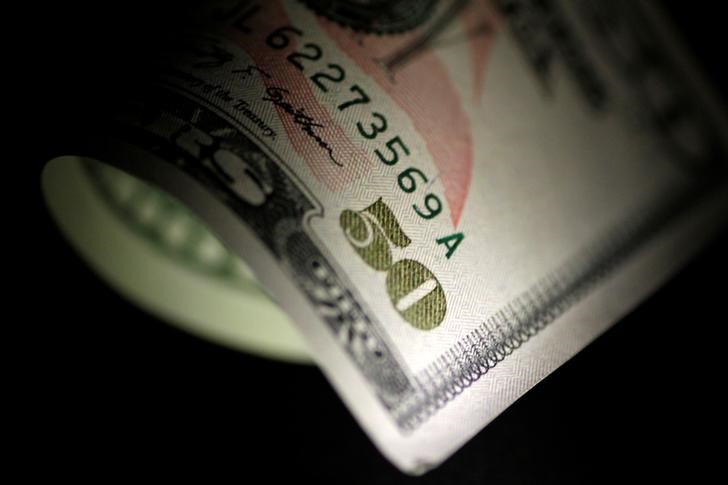Japan PPI inflation slips to 11-mth low in July
Investing.com - The U.S. dollar slipped lower Thursday, retreating slightly from a two-week high versus major peers as traders took U.S. President Donald Trump’s latest tariff announcements in their stride.
At 04:20 ET (08:20 GMT), the Dollar Index, which tracks the greenback against a basket of six other currencies, edged 0.1% lower to 97.107, after trading at its highest since June 25 during the prior session.
Dollar slips from recent highs
President Trump stirred the volatile trade pot once more overnight, sending letters dictating new U.S. tariff rates to seven more countries, adding to the letters sent to 14 other countries earlier this week.
He also announced a 50% tariff on Brazil after a spat with his Brazilian counterpart, and confirmed a 50% tariff on copper, making good on his earlier threat of such a move.
However, the moves in the foreign exchange markets have been relatively muted, with the exception of the Brazilian real, as traders still appear to expect deals with the major economies, like India and the European Union.
“The dollar is slightly offered this morning, but remains largely a bystander amid tariff chaos,” said analysts at ING, in a note.
“The question is what needs to happen for the dollar to take Trump’s tariff manoeuvres seriously. Our perception is that the bar is high for now, but should get lower as we approach the 1 August deadline. If by then trade negotiations with large U.S. partners aren’t at an advanced stage, it will be harder to ignore the higher U.S. tariff rate.”
Data remains a big driver of the dollar, especially after the minutes from the last Federal Reserve meeting confirmed that the cautious/hawkish front remains dominant in the FOMC.
Jobless claims will be in focus later in the session, and “the potential FX impact of next week’s CPI figures still looks much bigger than trade news,” ING added.
Euro sees limited volatility
In Europe, EUR/USD rose 0.1% to 1.1731, with volatility surrounding the single currency easing amid confidence that a trade deal can be signed between the EU and the U.S..
EU trade chief Maros Sefcovic said Wednesday that good progress had been made on a framework trade agreement and a deal may even be possible within days.
“A U.S.-EU trade deal seems imminent, with reports suggesting the European Commission’s interim draft should include asymmetrical tariffs on EU products (likely the 10% base tariff), effectively choosing a de-escalation path. That is likely priced in by now, and barring major surprises in the details of the deal, EUR/USD may stay attached to the 1.170-1.175 area for now,” ING said.
GBP/USD gained 0.2% to 1.3608, with the U.K. having already signed a trade deal with the Trump administration.
Brazilian real slumps on tariff threat
Elsewhere, USD/JPY slipped slightly to 146.29, and USD/CNY edged 0.1% lower to 7.1775, with most Asian currencies muted as investors digested fresh trade tariff salvos from President Trump.
USD/BRL soared 2.4% to 5.5766, after the U.S. president said he planned to slap a 50% tariff on all imports from Brazil.
The levies, which would come into effect from August 1, were partially a response to Trump’s anger at the perceived mistreatment of former Brazilian President Jair Bolsonaro, his political ally in the South American country.
